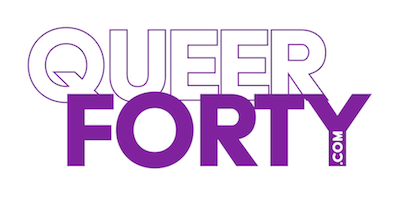Coming out at work: A step-by-step approach
Trans woman and CEO Wynne Nowland’s experience of transitioning while serving as the head of her organization has provided a solid basis for how to come out in the workplace.
In 2017, at the age of 56 years old, I sent an email that changed my entire life, informing every employee of Bradley & Parker — who had already known me for years as their CEO — that I am also a transgender woman.
When I came out as transgender to my company, it was a final step in my complete my personal coming out journey. I had already come out to my friends and family at the time. However, revealing my true self at work, where I spend most of my time, naturally gave me cause for concern. I knew I was fortunate enough to be leading a great team, but would they accept me when they heard this news? Regardless, it was a final step in living the life I wanted to live, and it needed to be taken.
An estimated 1.4 million Americans are transgender. They work in various industries and some hold positions of influence and power in their respective companies. It’s becoming increasingly common for transgender individuals to express interest in coming out to those they work with so that they may live as their authentic selves both outside of and within their workplace.
Employees who wish to come out at work may commonly have concerns about safety, support, and perception of their abilities in the workplace following their transition. Additionally, employers may have concerns about how to best support their transitioning employees. Under Title VII, employers cannot discriminate against a person because of their sexual orientation or gender identity, but support has to go beyond simply following the letter of the law. Employers and transitioning employees must want to work together to make coming out at work legally sound and comfortable for all parties involved.
Here’s a step by step guide on how I approached coming out as the CEO of a company.

1. Find an Ally
This may be challenging if you are the leader, but if you have a trusted associate who can be a reliable ally, it may help your situation to come out to them first. This ally can help bolster your confidence when you take the news of your transition to human resources (HR) or your direct supervisor.
In my own experience, I was the CEO. Because I was leading the company, I not only had to navigate finding support within my team, but I had to still effectively manage my employees, work with our board and executive team, and continue important relationships with clients and vendors.
2. Ready Yourself for Complex Situations
Coming out is complex in and of itself. Coming out as transgender at work can be like opening Pandora’s box. There’s a litany of considerations from everything to pronoun usage to what bathroom the transitioning person will be using.
When I came out, a few women at my company expressed concerns about my using the women’s bathroom facilities. These concerns were expressed in a respectful way and responded to in kind. They were politely told that I was just going to be using the facilities to do the same thing everyone else does and that we all just needed some time to adjust. Ultimately their fears were assuaged and it became a nonissue.
The different scenarios that may pop up and need to be thoughtfully addressed could, at times, feel like a field full of landmines. People who are transitioning should steel themselves for the different reactions of their coworkers. Often, the onus is on the transgender person to rally people behind them. It can seem overwhelming at times to the person that is transitioning, and I always try to tell others facing this similar experience to try to remember that even your most fervent supporters are bound to be a little surprised and taken aback at first. Give them some room to get used to your transition.
I experienced coworkers struggling to adjust with my pronouns, especially at the beginning. But, in my case, it seemed to me these were just slips of the tongue after having been used to addressing me in a certain manner for so long. They needed time to get used to the change, and now it virtually never happens. A more serious affront occurred when a potential client made it known that I was not welcome at a meeting to propose our services. Ultimately, our team decided to not pursue such a client. Regrettably those situations do occur. If you approach each situation that comes with humor, diplomacy, and an understanding that not everyone will have an ideal reaction to your transition, your coming out is more likely to be smooth.
3. Update Personal Information at Work
Changing one’s personal information on official documents such as birth certificates, social media, and work documents may seem like a small consideration. Still, it is a significant part of the transition process. Updating your personal information at work and informing your management, coworkers, and important clients of your new name and pronouns gives those around you clarity on your identity and how you want to be addressed.
When I sent that fateful email in 2017 to my entire company, I said, “You’ve all known me as Wayne, but tomorrow morning I will arrive to work as Wynne.” I was clear and definitive on what was happening, when it was happening, and how I wanted to be addressed going forward.
With any formal announcement at work, you may want to have new photos and documents such as business cards ready, so you can start living authentically in the workplace right away.

4. You Call the Shots
When I came out, I decided to first contact our board and leadership team before coming out to everyone in the company at once via email. I made this decision as a leader in the company because it was the approach that made me the most comfortable.
It is important to remember that this is your journey, and you decide what you are comfortable with when you come out. Some people choose to come out gradually as their appearance and mode of dress starts to change. I decided that for me, it was better to do those preparations mostly in private and come out once I was fully prepared. I’m kind of a rip-the-Band-Aid-off type of person!
Whether you decide to transition gradually or all at once, having the support of your workplace makes for a far smoother progression in your coming out journey. Ultimately, this is your story, and you are the author. While you cannot control your coworkers’ response to your transition, you can control the when and how of coming out.
The support of leadership at your workplace is integral to a smooth transition and coming out announcement. Even though I was the CEO, the support of my entire team helped me through the coming out process. With allies and open communication, coming out at work can be a successful facet of your overall transition journey.

About Wynne Nowland, CEO of Bradley & Parker
Wynne transitioned genders at age 56. She came out as trans to her entire company in an email—featured in the WSJ—saying “You’ve all known me as Wayne, but tomorrow morning I will arrive to work as Wynne.” She was already out to her family and many friends, but coming out at work was her final step to being who she truly was. As one of very few trans CEO’s, Wynne is able to provide unique insight on trans issues and topics as a trans business leader and entrepreneur.






